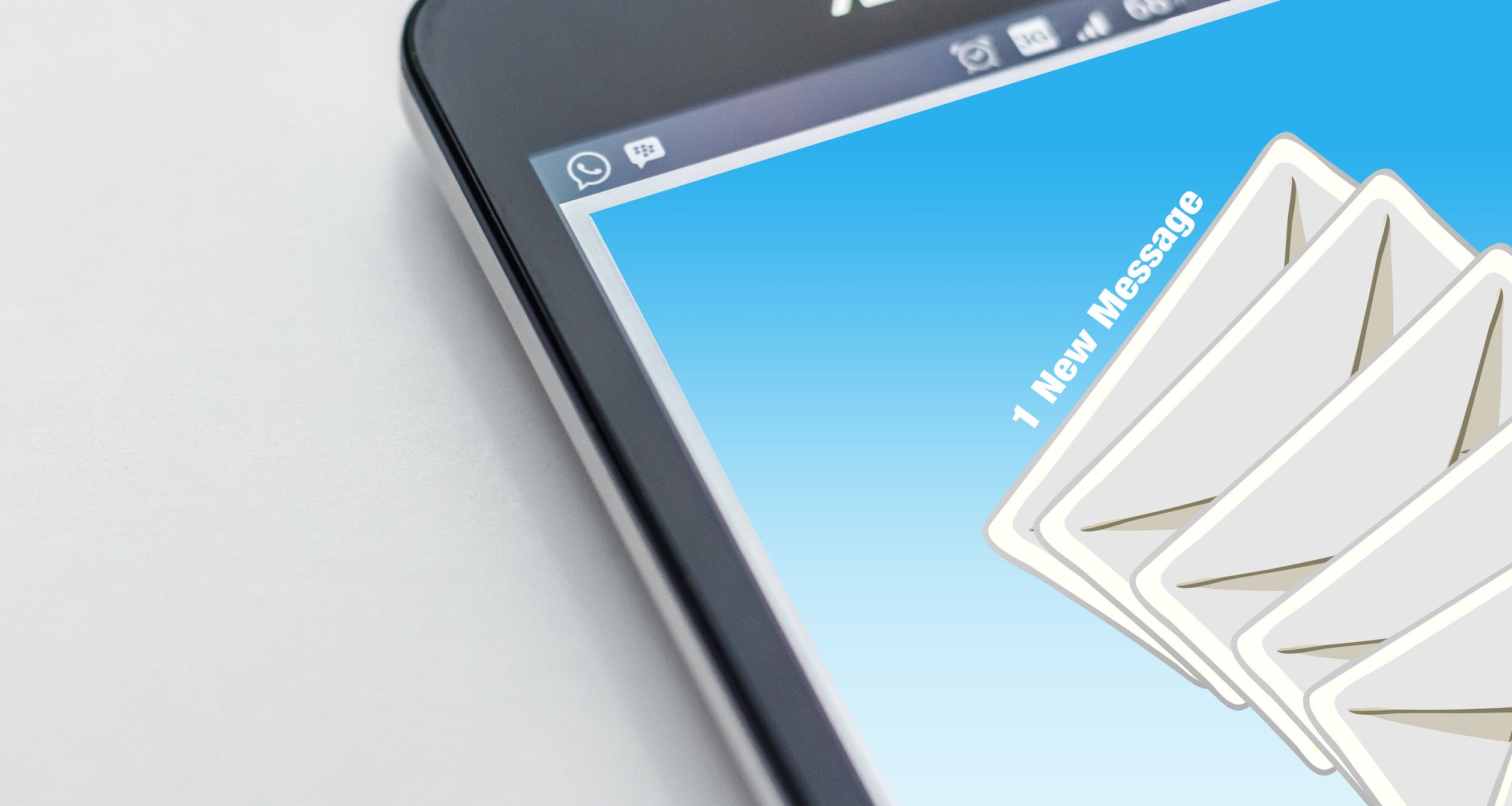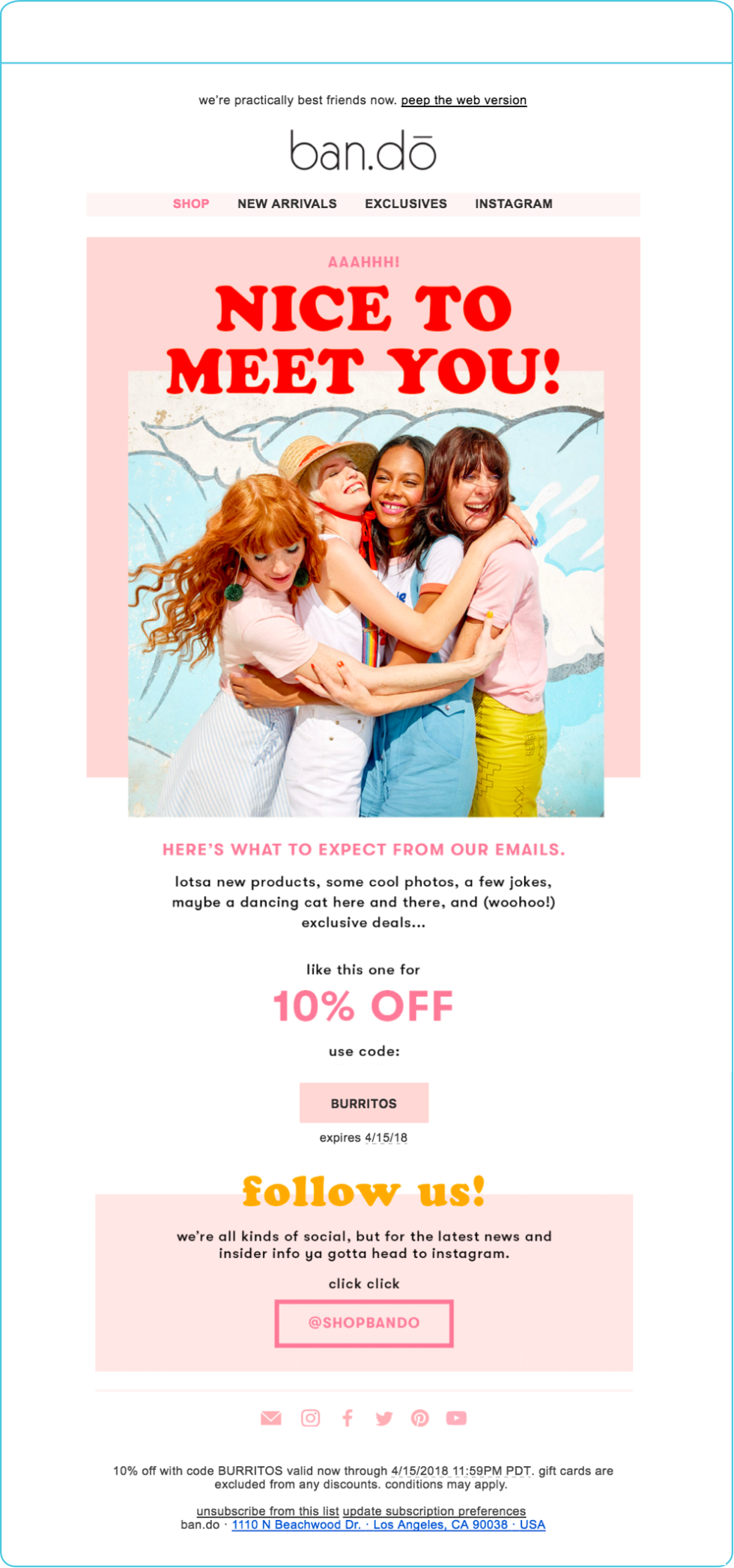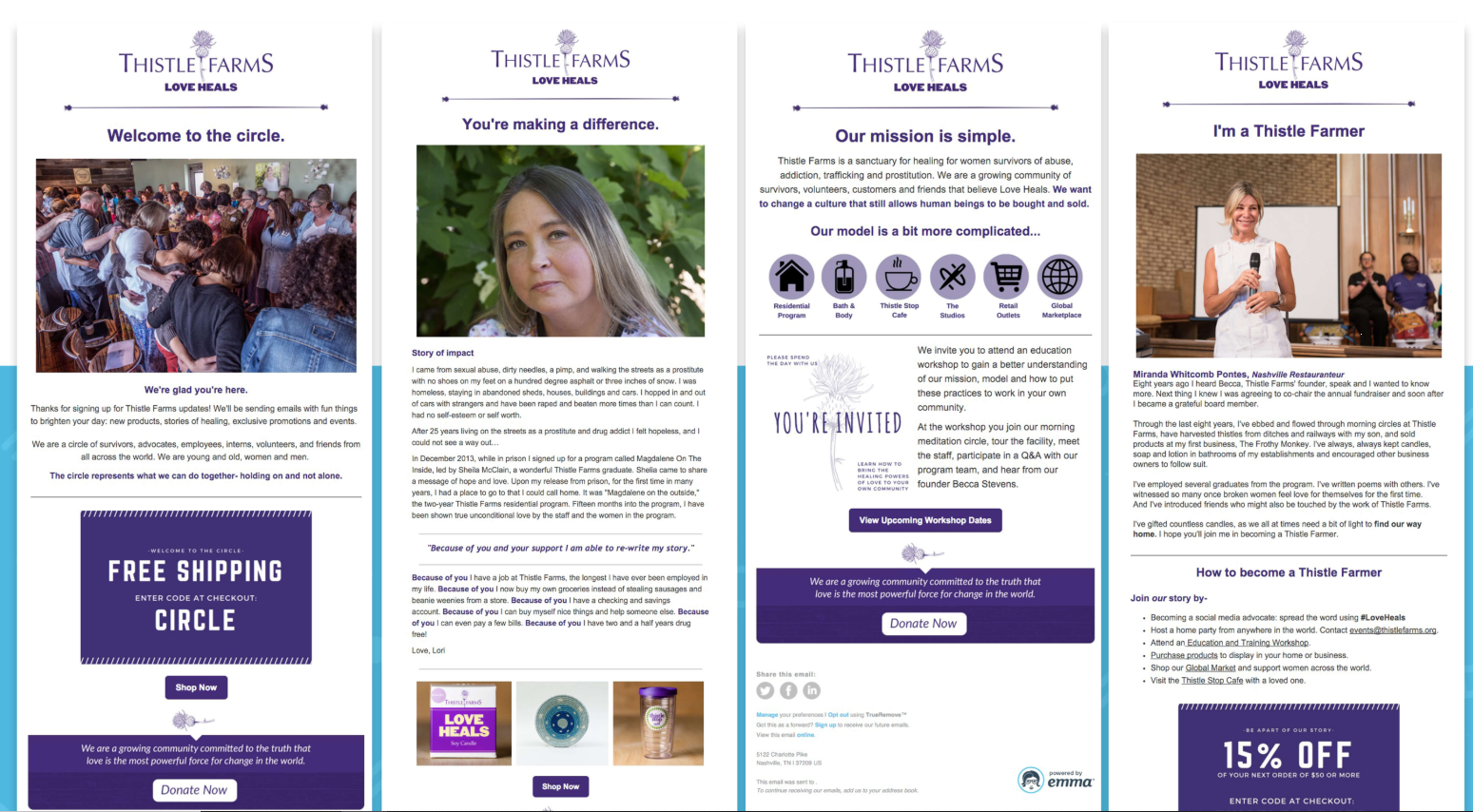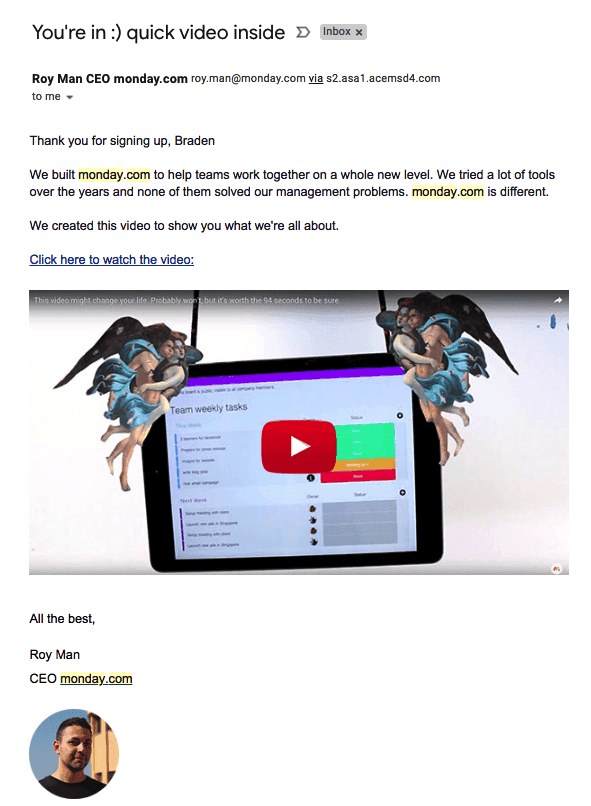How to Build an Engaging Email Welcome Series

You spend a lot of time and energy collecting email addresses, but you can’t ignore your new subscribers once they hit your email list. You have to engage them with valuable content that helps them understand and support your brand. The best way to do that in the beginning of a relationship is with an email welcome series.
An email welcome series is a sequence of emails that introduces your new subscribers to your brand and establishes a relationship. It’s a key way to make a positive first impression so subscribers look forward to your future email content. Many look like this:

In this article, we’d like to explain how to build a welcome series that engages your customers and kicks off a long-lasting relationship.
Determine Your Key Points
An email welcome series should consist of several messages, but exactly how many emails you send is up to you. It depends on what you want your new subscribers to know.
That said, you don’t want your welcome series to go on forever. Choose between three and seven key points you want your new subscribers to know. Each point will be the subject of one of your emails.
What are your key points? There’s no universal answer here. That depends on your brand and your customers. Ask yourself what you want subscribers to know about you and your business.
Here are a few ideas for welcome series content:
- How the product or service works.
- Why you are different from your competitors.
- Your history, mission, and values.
- Your credentials (or whomever is the face of your company).
- Customer stories, testimonials, and reviews.
- Exclusive perks and promotions for subscribers.
- Frequently asked questions about you or your company.
- Other ways to connect with you.
Here’s an example of a welcome series from Thistle Farms. Notice how each email has a distinct message.

Don’t add key points to your list just to create more emails. For instance, if you aren’t active on Instagram, it wouldn’t make sense to send a welcome email that asks customers to follow you. But if Instagram is a big part of your marketing, that kind of email would be appropriate.
Each key point should include some way for your subscribers to take action. It doesn’t have to be much, but you should do something to condition them to taking steps with you. For instance, if you send an email that explains your brand’s mission, include a call-to-action that links to an article where they can read a longer explanation.
Determine the Series’ Structure and Frequency
Like your key points, this is another area where you have some leeway. Nevertheless, we can give you some best practices.
Your first welcome series email should be sent immediately upon sign up. This is when your new subscribers are most engaged, so you’ll want to leverage that with your first piece of content.
Ideally, the subject of the first email should match with how they signed up as closely as possible. For instance, if they signed up through a contact form at the bottom of a blog post, your first welcome email might say something like, “Since you enjoy our blog, you’ll love this whitepaper.” This creates a seamless experience that helps the subscriber understand that you care about them.
Instead of bombarding your new subscribers with too many emails, place a delay between each subsequent message. Remember, you aren’t the only brand on your subscribers’ minds. They won’t appreciate multiple non-transactional messages on the same day.
How long of a delay is up to you. There should be at least a full day between each email day. So if you email on day one, don’t email again until day three.
Short delays are best for customers who have an immediate problem they need solved quickly. If someone expresses interest buying your software product, for instance, you would want to educate them quickly so they have all of the information they need to buy. But if you’re a general ecommerce brand, it’s best to spread your welcome series over several weeks.
Project management tool Monday sends an email quickly after signup because they don’t want you to struggle with their app for long.

Segment Your Subscribers
You’ll find it useful to segment your subscribers into groups based on their behavior, then create unique welcome emails for each group. This improves engagement because subscribers only see the kind of content that matters to them.
For example, let’s say there are two ways people join your email list: 1) Signing up through a contact form (this would be a lead), and 2) Making a purchase.
In this case, both groups have different needs. A lead still needs to be convinced to buy your product. They need you to answer those “before purchase” questions. They want to know how you’ll make their lives easier and how you compare to your competitors.
But a customer doesn’t need to read why they should buy. They’re already past that point. They want to know how to get the most use out of their purchase or why they should buy again.
So it would help to have a unique email welcome series for each group. In fact, there are probably lots of ways to segment new customers, like by what they purchased, where they signed up (blog post vs. webinar, for example), or how much they spent.
Keep New Subscribers Off Your Main List
Since your welcome series recipients are new to your brand, they aren’t ready to receive your regular email broadcasts. For instance, sending out a holiday coupon to a new subscriber isn’t appropriate if they don’t know enough about your product to determine whether or not they want to keep using it. In that context, a promotional email just seems like spam.
So it’s important to prevent new subscribers from seeing your other email content until the welcome series completes. The final step of your welcome series automation should make your other email content available. Depending on which email marketing tool you use, this may involve moving them from one list to another or toggling tags on and off.
Build Your Email Automations
To set up your email welcome series, you’ll need to use the automation feature in your email marketing tool. Some email marketing tools call them workflows, sequences, or drip campaigns.
Even though each email should contain unique content, you’ll want to use a consistent design through the entire welcome series. In fact, it’s best to use a consistent design for all of your marketing emails so your subscribers grow familiar with them.
As you create each email, remember to stick to your key points. Each email should have a singular purpose. Don’t cram extra details into your emails to try and make them more valuable. This doesn’t work. It’s just distracting for your subscribers.
Before you activate your email series, make sure to send yourself each email to review how it looks in an email client. View it in multiple browsers and add multiple screen sizes. The last thing you want to do is send emails that your subscribers can’t read.
Monitor Your Results
Since your welcome series is just a collection of emails, you can monitor the performance of each to identify what needs to be optimized. You’ll want to check a few data points:
- Open rate – This is the percentage of people who open the email. If your rate is low, experiment with your subject line and preview text.
- Click through rate – This is the percentage of people who click a link in your email. It helps to limit yourself to one link per email so you know which link this rate refers to, unless your email marketing program breaks it down by link.
- Unsubscribes – Ideally, no one would unsubscribe, but people do all the time for various reasons. But if one email creates a lot of unsubscribes, you should change that email.
- Spam complaints – Like unsubscribes, some of these are inevitable, but a high number means your subscribers find something spammy about your content.
- Conversion rate – This refers to the number of people who click a link in an email and ultimately make a purchase. It’s a little harder to track, so you’ll have to find a way to integrate your website and email marketing tool together, but it’s worth the effort.
Don’t be afraid to make changes to your welcome series if you aren’t happy with the performance of a single email or the whole sequence. Optimize different elements and compare your results until you find a combination that performs well.
Going Forward
Once you have your email welcome series up and running, you’ll be a great position to build healthy relationships with your subscribers and customers. Tweak your welcome series over time whenever you make changes to your business so your subscribers always have the best information. Good luck!